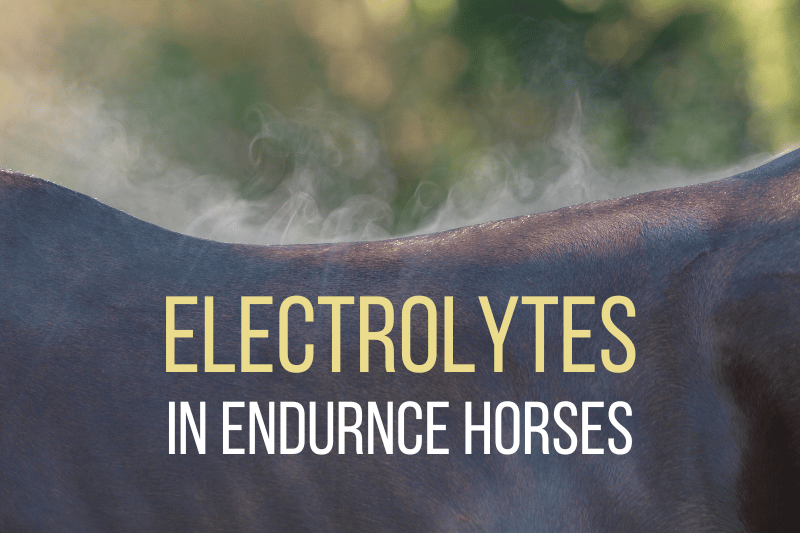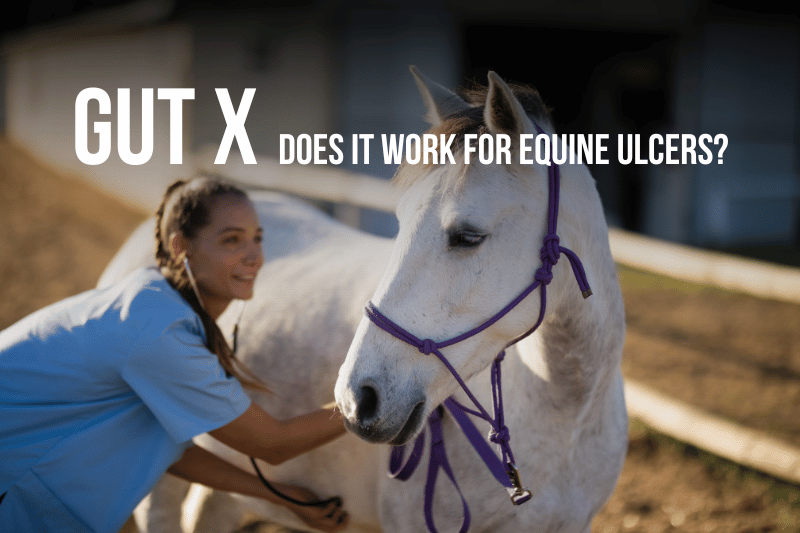Dr. Langdon Fielding, DVM, MBA, DAVECC, DACVSMR, is a self-proclaimed electrolyte fanatic. He spoke on the subject of electrolyte problems in endurance horses at the 2021 AERC Unconventional Convention. Here are the highlights from my notes.
Dr. Fielding set the stage with some basics:
- The concentration of electrolytes in a horse’s blood is different than the concentration of electrolytes in his sweat.
- Potassium and chloride are much higher in sweat than in blood.
- Calcium and magnesium are lower in sweat than in blood, though the difference is less extreme.
- Sodium levels are similar in sweat and blood.
Sodium in the Endurance Horse
The “ain’t doin’ right” horse’s sodium was high. How did it get that way? Either he was given too many electrolytes, or he lost more water through sweat then he replaced by drinking. He may also have been dehydrated before the start.
If the horse’s lab panel had shown low sodium levels instead, Dr. Fielding would have been asking if we didn’t administer enough electrolytes, or if the horse actually drank too much. He observed that although it is possible (such as after a tough trailer haul), horses rarely begin rides deficient in electrolytes.
Because sodium is all about the balance between electrolytes and water, identifying which side of the equation (sodium or water) got the level out of whack is key to preventing a repeat performance.
Potassium in the Endurance Horse
Moving on to potassium, Dr. Fielding said so much of this electrolyte is lost in sweat that low levels are common on lab panels taken during endurance events. Some horses tolerate low potassium better than others, and it’s not always problematic. However, low potassium is common in horses that are struggling or require treatment.
Dr. Fielding added that although weakness is a classic symptom of low potassium, this can be hard to differentiate from normal fatigue in an endurance horse.
Calcium and Thumps in the Endurance Horse
Dr. Fielding noted that although calcium is clearly tied to muscle and heart function, it is less consistently associated with endurance horses that are having trouble.
Low calcium, typically in addition to loss of potassium, chloride, and sodium (in Dr. Fielding’s words, “lots of electrolyte abnormalities colliding”), can contribute to synchronous diaphragmatic flutter, or thumps. Interestingly, thumps may be observed in a horse that is otherwise fine, as well as in a horse that is exhausted.
Dr. Fielding noted that feeing a horse alfalfa (which is high in calcium) can help thumps resolve within an hour or two, but cautioned that giving electrolytes to the horse could be risky if the horse is dehydrated. He said a vet would generally treat thumps with IV fluids including calcium.
He emphasized the importance of determining why a horse prone to thumps is affected. Future episodes may be preventable through changes to the horse’s electrolyte protocol. Responding to an audience question, Dr. Fielding added that although not well documented, it is possible that a genetic component predisposes some horses to thumps.
It is also possible – though this has not been rigorously tested – that feeding a low calcium diet during conditioning, then offering alfalfa just before the ride, can help prevent thumps. Dr. Fielding cautioned against doing the reverse; that is, eliminating alfalfa at a ride if a horse is accustomed to consuming it.
It’s Not Always the Electrolytes
Dr. Fielding wrapped up his presentation with a reminder that problems in endurance horses aren’t always about electrolytes…and when they are, the answer isn’t always about changing products or administering more.
Riders should do their best to ensure that horse are hydrated before the ride and that sweat losses (both electrolytes and water) are replaced during the ride. If a particular horse is having issues, the rider should work with her vet on a targeted strategy.
Q&A with Dr. Fielding
Q. Where do you start on developing an electrolyte strategy?
A. As a starting place in a horse that isn’t having problems, try 1/2 tube of electrolytes per vet check.
Q. Should we preload with electrolytes?
A. Dr. Fielding is neither for nor against this practice. Additional research on the subject is needed.
There was so much more to this presentation that I couldn’t scribble fast enough to capture. For example, did you know that blood gets less acidic as chloride is lost? Or that ammonia is an electrolyte? I guess that’s just a plug for attending seminars personally whenever you can!




Ashley Tomaszewski posted this on social media and kindly gave permission form me to share here, because it’s important advice:
I loved you picking up on “For example, did you know that blood gets less acidic as chloride is lost?” I teach this to my endurance students when looking at purchasing a commercial electrolyte. For endurance. you need to look for one that does not contain sodium bicarbonate as it will continue to make the blood less and less acidic (more basic) and throwing off the ph of the blood can lead to bigger problems. Horses doing short fast work (like track racing, show jumping, cattle work, etc.) need the sodium bicarbonate in the electrolyte to raise the ph of their blood levels as the anaerobic work makes the blood more acidic.